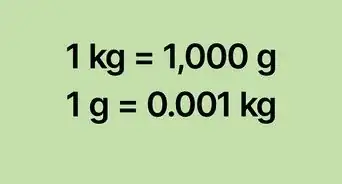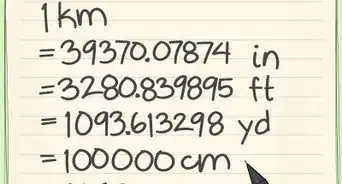wikiHow is a “wiki,” similar to Wikipedia, which means that many of our articles are co-written by multiple authors. To create this article, 25 people, some anonymous, worked to edit and improve it over time.
This article has been viewed 330,743 times.
Learn more...
There are many tools to do convert meters to feet on the web, but most teachers require you to show your work. It's also a good idea to understand the process yourself, making it less likely that you'll make a mistake. If you're trying to convert square meters (m2) or cubic meters (m3), you'll need to convert to square feet or cubic feet to match. Fortunately, none of these conversions are difficult once you know what to do.
Steps
Meters to Feet Converter
Converting Meters to Feet
-
1Learn that one meter equals 3.28 feet. One meter is a length measurement, equal to 3.28 feet.[1] You can test this using a meter stick and 1 foot (12 inch) rulers. Lay the meter stick on the ground, and place the rulers end-to-end next to it. Three rulers (3 feet) will almost be as long as the meter stick. If you add a fourth ruler, you'll be able to measure that extra distance: 0.28 ft, which is a little more than three inches.
- If you need to be super precise, you can use 1 meter = 3.28084 feet. Because this is extremely close to 3.28 feet, though, you'll almost always want to use the simpler number to make the math easier.[2]
-
2Multiply any meter measurement by 3.28 to convert to feet. Since one meter = 3.28 feet, you can convert any meter measurement into feet by multiplying it by 3.28. If you're not sure how to do this, read about multiplying decimals. Here are some examples. If you want, you can try to do the multiplication on your own and see if you get the right answer:[3]
- 1 meter x 3.28 = 3.28 feet
- 5 meters x 3.28 = 16.4 feet
- 2.7 meters x 3.28 = 8.856 feet
Advertisement -
3Convert your answer to include inches (optional). For most math problems, all you need is the answer you got in the last step. But if you are curious how long something is, an answer like "8.856 feet" might not mean much to you. Try taking the decimal point and everything after it, then multiplying that by 12 to turn it into inches. This works because 1 foot = 12 inches. It's a conversion just like the one we used for meters and feet. Here are some examples:
- 3.28 feet = 3 feet + 0.28 feet. Because 0.28 feet x 12 = 3.36, that means 3.28 feet = 3 feet and 3.36 inches
- 16.4 feet = 16 feet + 0.4 feet. Because 0.4 feet x 12 = 4.8, that means 16.4 feet = 16 feet and 4.8 inches
- 8.856 feet = 8 feet + 0.856 feet. Because 0.856 feet x 12 = 10.272, so 8.856 feet = 10 feet and 10.272 inches
Converting Square Meters to Square Feet
-
1Understand square meters. Square meters, often written as m2, are a measurement of area. Area is used to measure two-dimensional surfaces, like the floor of a room, or a sports field. One square meter is a unit of area equal to a square that is one meter long and one meter wide. You can convert units of area only to other units of area, never to units of length. In this method, we'll convert from square meters (m2) to square feet (ft2).
- A square foot is a unit of area equal to a square one foot long and one foot wide.
-
2Understand why you need to use square feet. Converting from square meters to square feet works fine. It's like saying "I know four of these big squares will cover this floor. How many small squares will?" You can't convert to units measured with a ruler (like ordinary feet), because that's like asking "How long of a ruler would I need to cover the floor?" No matter how long a straight ruler gets, it can't cover a floor.
-
3Multiple square meters by 10.8 to get square feet. One square meter can fit 10.8 square feet inside it. This means you can multiply any m2 measurement by 10.8 to get the same measurement in ft2.
- If you need to be extra precise, multiply by 10.764 instead.[4]
Converting Cubic Meters into Cubic Feet
-
1Understand cubic meters. A cubic meter is written m3. It is a unit of volume, which measures space in three dimensions. You can use cubic meters to measure the amount of air in a room, or the amount of water in an aquarium. A cubic meter is an amount of volume equal to a cube one meter long, one meter wide, and one meter tall.[5]
- Similarly, a cubic foot (ft3) is equal to a cube one foot long, one foot wide, and one foot tall.
-
2Multiply cubic meters by 35.3 to get cubic feet. One cubic meter can fit 35.3 cubic feet inside of it. Notice how this number is bigger than the conversion used above for m2 or plain old meters? That's because you're multiplying the difference three times when you're in three dimensions. The cubic meter is 3.28 times longer than the cubic foot, but it's also 3.28 times wider and 3.28 times taller. 3.28 x 3.28 x 3.28 = 35.3, so the cubic meter is 35.3 times bigger by volume than the cubic foot.[6]
- To be more precise, multiply by 35.315 instead.[7]
Community Q&A
-
Question1.62 meters, how do I find inches?
 DonaganTop AnswererThere are 39.37 inches in a meter. Multiply 39.37 by 1.62.
DonaganTop AnswererThere are 39.37 inches in a meter. Multiply 39.37 by 1.62. -
QuestionWhat is the conversion mm to feet?
 DonaganTop AnswererDivide mm by 304.8.
DonaganTop AnswererDivide mm by 304.8. -
QuestionIs 24 inches the same as 3.28 feet?
 Community AnswerNo. There are 12 inches in 1 foot. Therefore 24 inches (also written as 24") is equal to 2 feet.
Community AnswerNo. There are 12 inches in 1 foot. Therefore 24 inches (also written as 24") is equal to 2 feet.
References
- ↑ https://www.rapidtables.com/convert/length/meter-to-feet.html
- ↑ https://www.calculatorsoup.com/calculators/conversions/meters-to-feet.php
- ↑ https://www.calculatorsoup.com/calculators/conversions/meters-to-feet.php
- ↑ http://www.metric-conversions.org/area/square-meters-to-square-feet.htm
- ↑ https://www.mathsisfun.com/definitions/cubic-meter.html
- ↑ https://sciencing.com/calculate-cubic-meters-4759883.html
- ↑ http://www.metric-conversions.org/volume/cubic-meters-to-cubic-feet.htm
About This Article
To convert meters to feet, take the metric measurement and multiply it by 3.28. You can then change it into inches by multiplying that number by 12. If you want to convert square meters, which is an expression of area, into square feet, multiply the metric measurement by 10.8. For tips on how to convert cubic meters into cubic feet, keep reading.

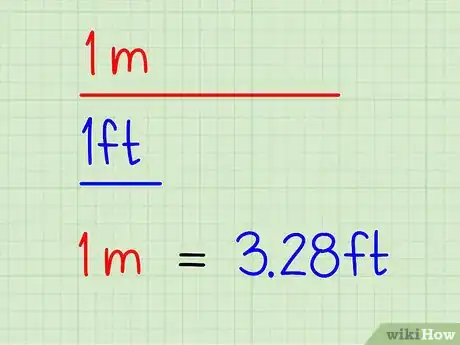
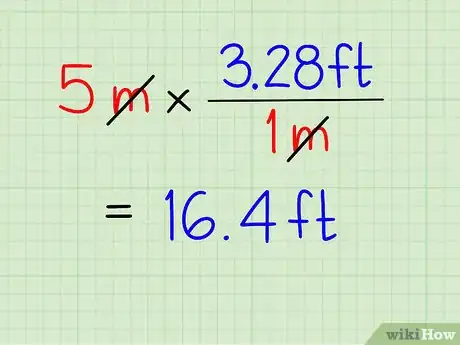
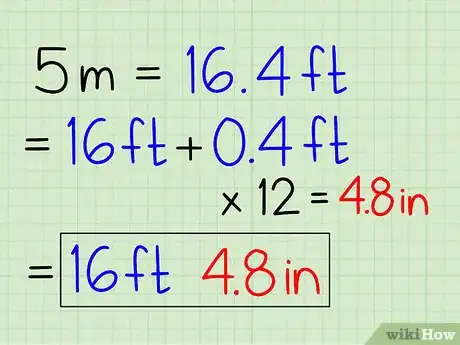
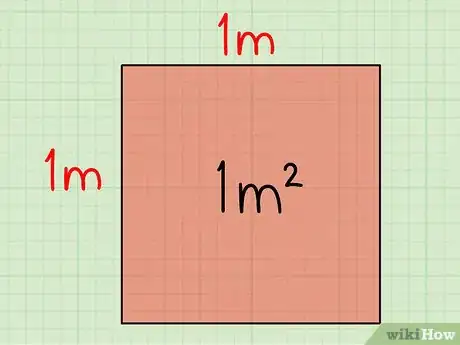
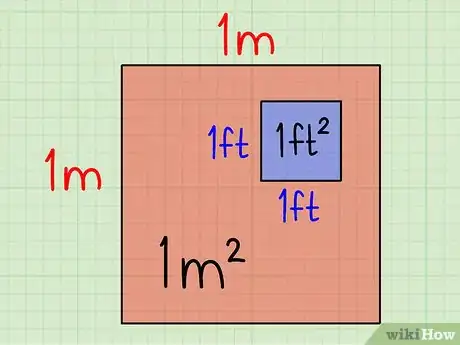
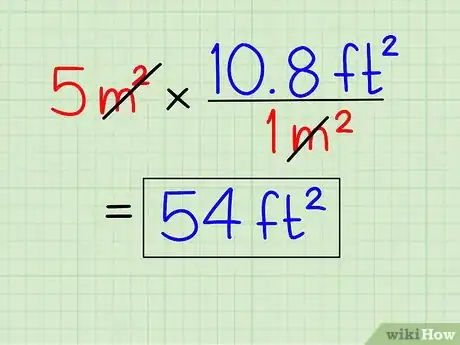
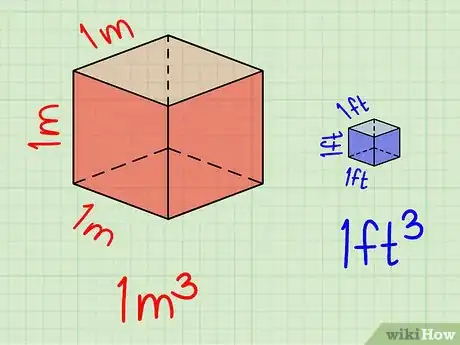
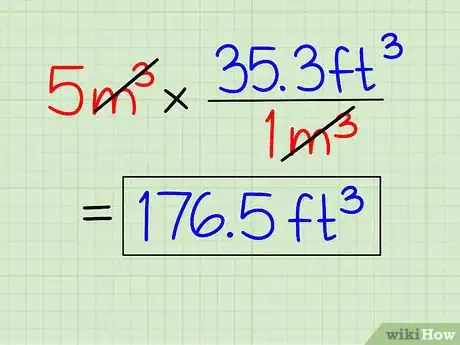
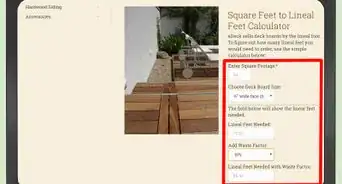
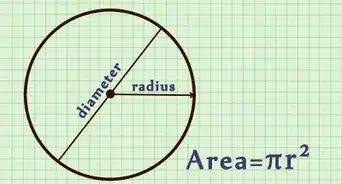


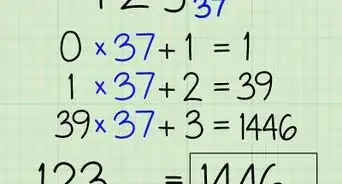
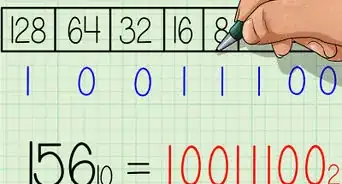
-to-Grams-(g)-Step-8-Version-5.webp)
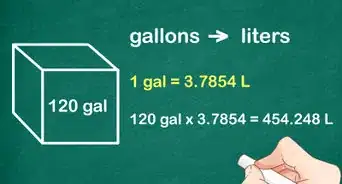
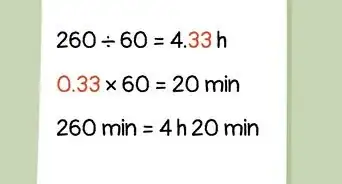
-to-Fahrenheit-(°F)-Step-6-Version-2.webp)
